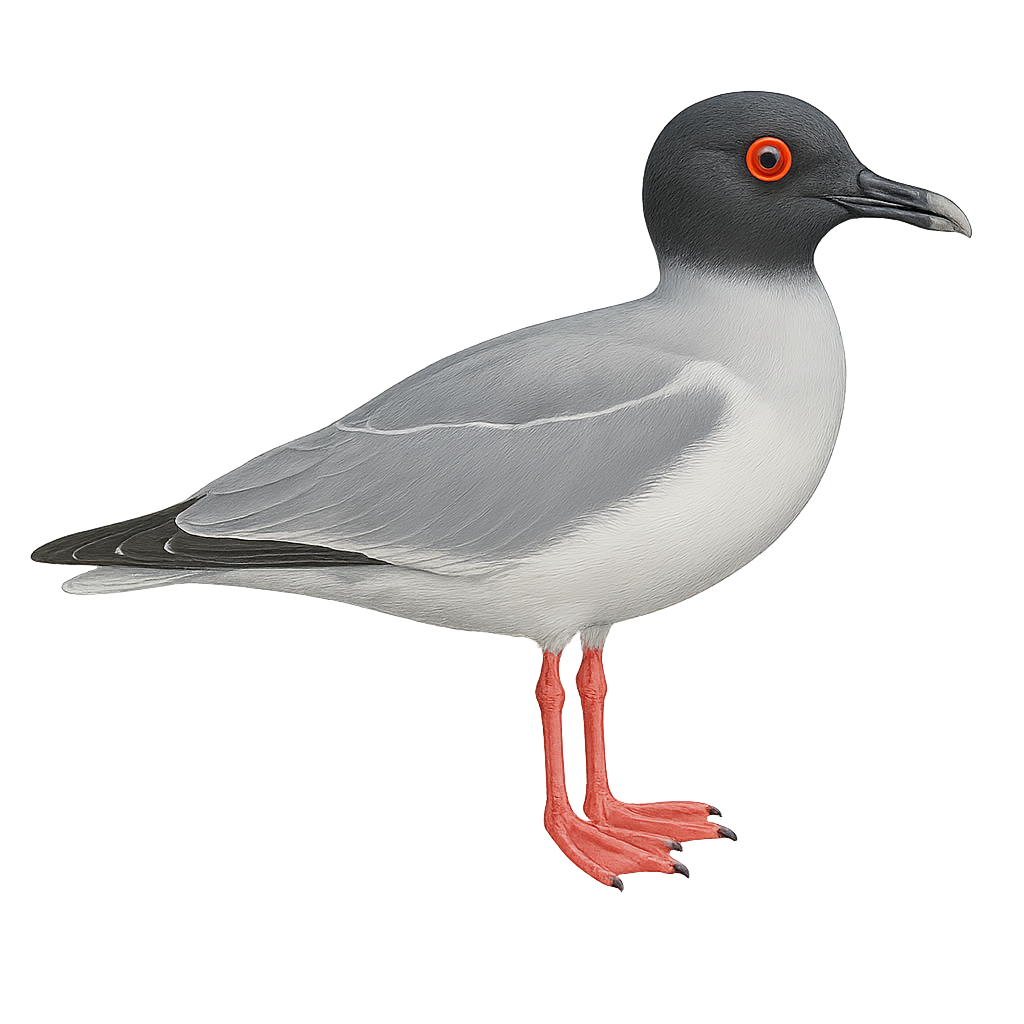Your wildlife photography guide.
Explore the swallow-tailed gull in detail, study its behavior, prepare your shots.
Where to observe and photograph the swallow-tailed gull in the wild
Learn where and when to spot the swallow-tailed gull in the wild, how to identify the species based on distinctive features, and what natural environments it inhabits. The WildlifePhotographer app offers tailored photography tips that reflect the swallow-tailed gull’s behavior, helping you capture better wildlife images. Explore the full species profile for key information including description, habitat, active periods, and approach techniques.
Swallow-tailed Gull
Scientific name: Creagrus furcatus

IUCN Status: Least Concern
Family: LARIDAE
Group: Birds
Sensitivity to human approach: Tolerant
Minimum approach distance: 10 m
Courtship display: June to October
Incubation: 29-32 jours
Hatchings: July to November
Habitat:
rocky cliffs, islands, coasts
Activity period :
Mainly active at night, generally discreet during the day.
Identification and description:
The Swallow-tailed Gull, Creagrus furcatus, is a unique seabird primarily found in the Galápagos Islands. It is distinguished by its forked tail and grey and white plumage. Its black bill is tipped with red, and its eyes are surrounded by a red ring, giving it a piercing look. This gull is nocturnal, a rarity among seabirds, and feeds mainly on fish and squid caught in flight. It nests on rocky cliffs, usually laying a single egg. Its behavior is relatively tolerant towards humans, allowing for close observation.
Recommended lens:
400mm – adjust based on distance, desired framing (portrait or habitat), and approach conditions.
Photography tips:
To photograph the Swallow-tailed Gull, focus on twilight or nighttime hours, as this is when it is most active. Use a 400mm lens or longer to capture detailed images without disturbing the bird. The rocky cliffs of the Galápagos Islands provide a stunning natural backdrop, ideal for dynamic compositions. Be patient and maintain a 10m safety distance to avoid disrupting their natural behavior.
The WildlifePhotographer App is coming soon!
Be the first to explore the best nature spots, track rutting seasons, log your observations, and observe more wildlife.
Already 1 432 wildlife lovers subscribed worldwide

